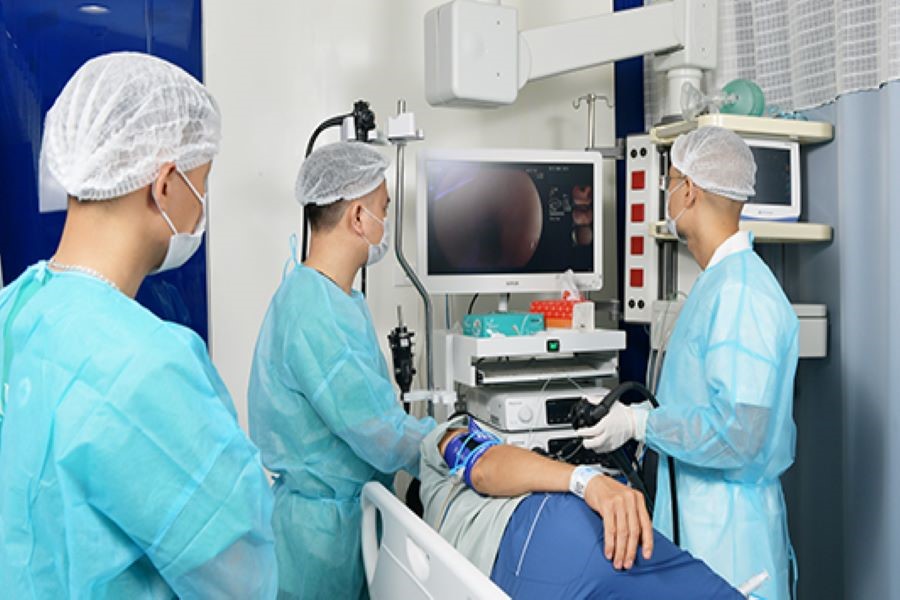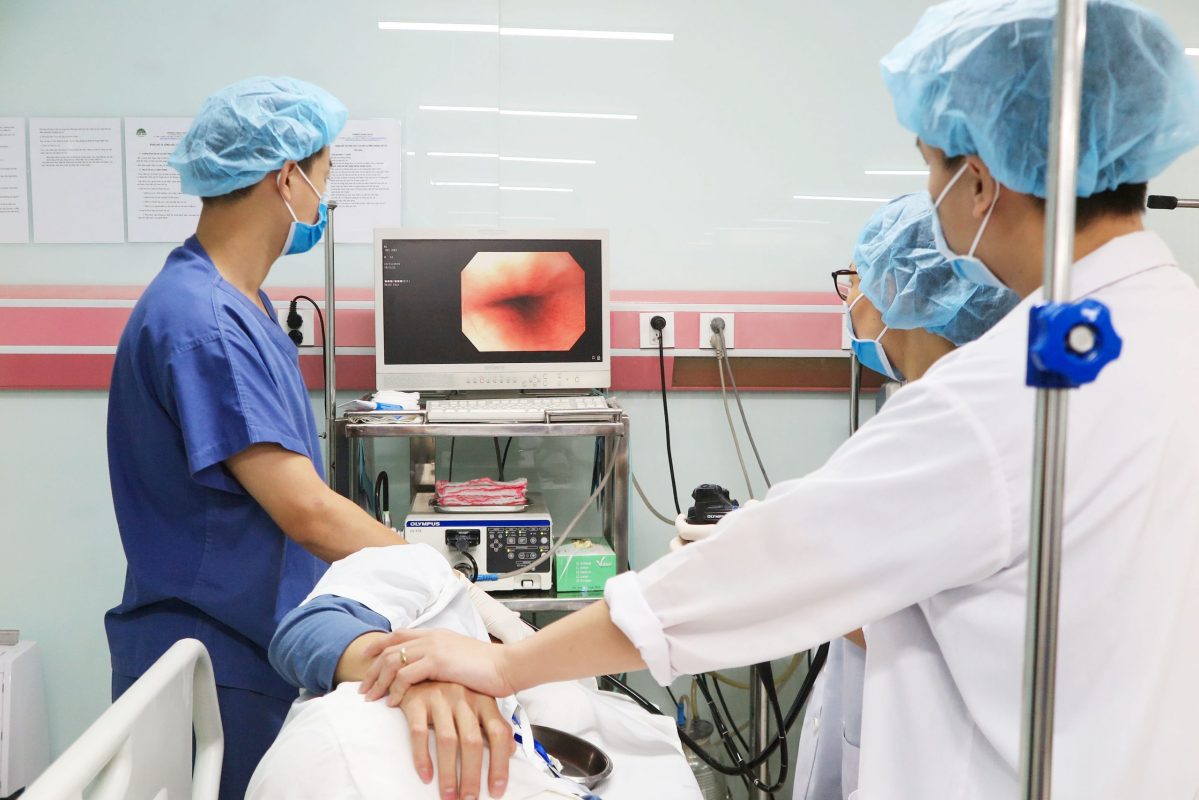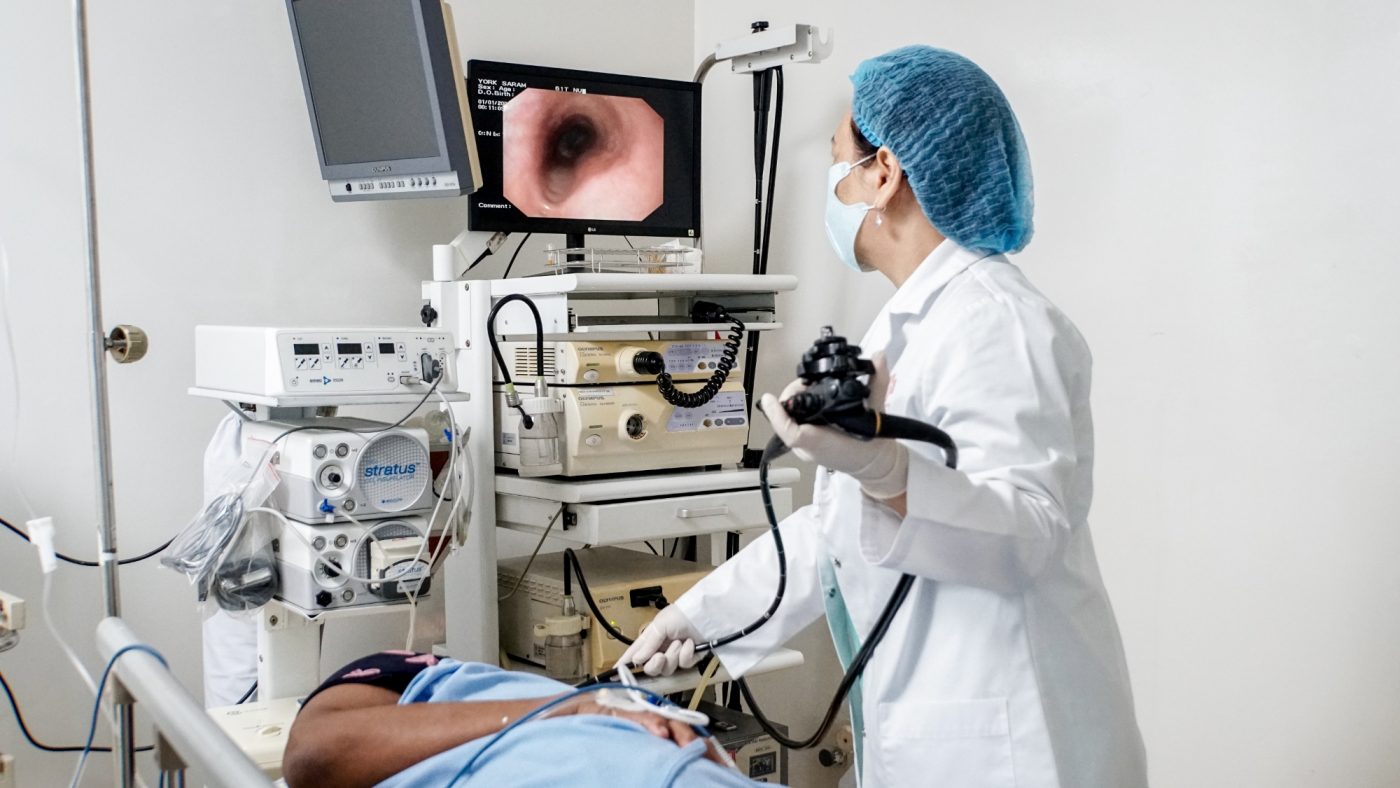Gastrointestinal endoscopy is an advanced technique that helps detect and treat early digestive diseases, from ulcers to cancer, bringing high efficiency to patients and improving the quality of medical care.
1. What is digestive endoscopy?
Gastrointestinal endoscopy is a modern medical technique that uses a thin, flexible endoscope with a small camera attached to directly observe the inside of the digestive tract. This technique helps doctors clearly observe organs such as the esophagus, stomach, duodenum, and colon to detect and treat potential diseases.
In addition to observation, gastrointestinal endoscopy can also perform therapeutic interventions, such as:
- Polypectomy: Remove small tumors before they develop into cancer.
- Hemostasis: Treatment of gastrointestinal bleeding due to ulcers or ruptured blood vessels.
- Digestive tract expansion: Treatment of esophageal or gastrointestinal strictures caused by scarring.

2. Benefits of digestive endoscopy
a. Early diagnosis of dangerous diseases:
- Gastrointestinal endoscopy can detect the smallest lesions, from ulcers, infections to polyps or early stage cancer.
- Early diagnosis helps increase the success rate of treatment, especially with dangerous diseases such as stomach cancer and colorectal cancer.
b. Minimally invasive treatment:
- Compared with traditional surgery, gastrointestinal endoscopy is a less invasive treatment method, bringing comfort to the patient.
- Faster recovery time, helping patients return to normal life sooner.
c. Economic efficiency:
- Endoscopic techniques are often less expensive than other invasive diagnostic and treatment methods, reducing the financial burden on patients.

3. Application of digestive endoscopy in Vietnam
In recent years, gastrointestinal endoscopy has made great strides in Vietnam, thanks to:
a. Support from international organizations:
- Through cooperation with major organizations around the world, Vietnam has adopted many advanced endoscopic technologies, such as dye endoscopy, magnifying endoscopy, and ultrasound endoscopy.
- These technologies help improve accurate diagnosis and effective treatment.
b. Professional training:
- Specialized gastrointestinal endoscopy training courses are held regularly to help medical staff improve their skills and update new knowledge.
- Vietnam Interventional Gastrointestinal Endoscopy Society (VIGES) plays an important role in connecting the professional community, organizing seminars and transferring technology.
c. Widely applied in hospitals:
- Currently, major hospitals and medical centers in Vietnam have deployed modern endoscopic techniques, bringing high treatment efficiency and improving the quality of health care.

4. The future of gastrointestinal endoscopy in Vietnam
With the continuous development of technology and support from medical organizations, gastrointestinal endoscopy in Vietnam promises to achieve many more outstanding achievements. The goals include:
- Standardize endoscopy procedures at medical facilities nationwide.
- Increase the rate of early detection of digestive cancer.
- Improve treatment quality, approaching international standards.

